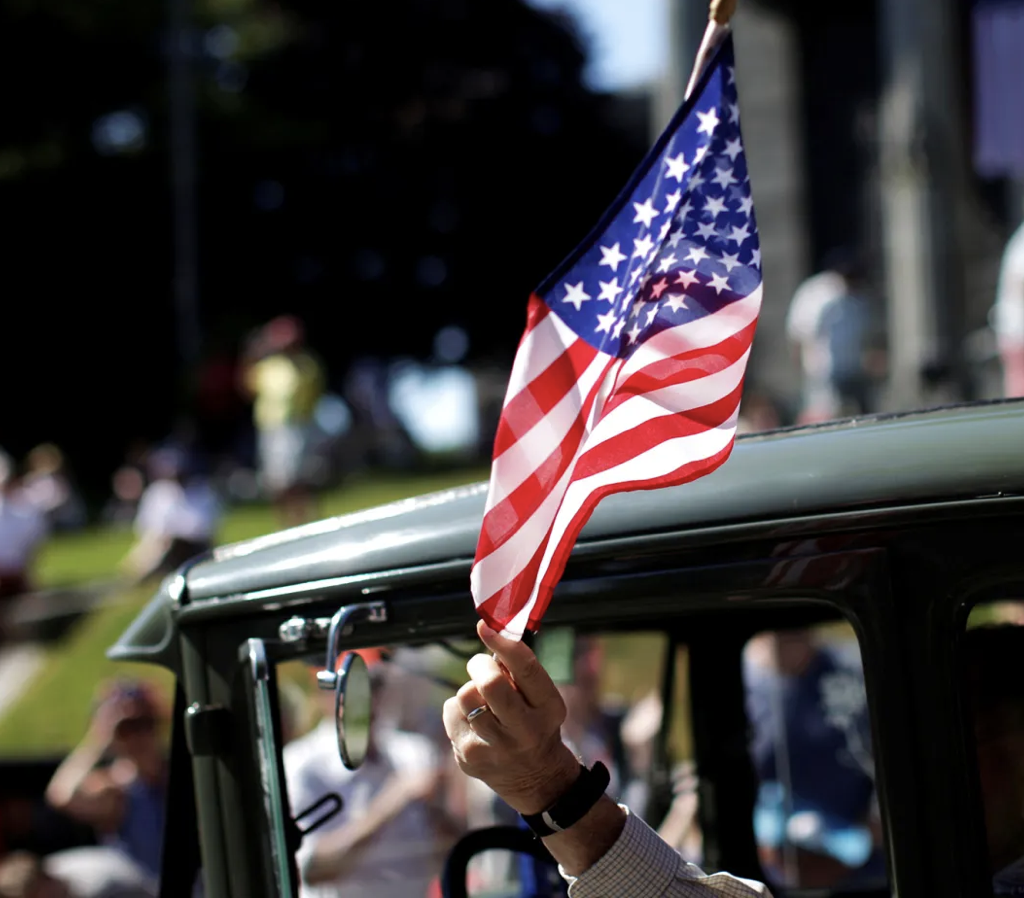By: Charles C. W. Cooke – nationalreview.com – March 25, 2024
The fewer flags we fly other than the Stars and Stripes, the better.
Ihave been meaning for a while now to complain about the way in which Americans have come to deploy their national flag, but, until today, a clean opportunity has never quite presented itself. Where I live, in North Florida, Old Glory is ubiquitous, and yet, when presented officially, it is increasingly common to see it flying at half-staff. This now happens so regularly, in fact, that I have taken to inquiring what exactly has prompted each change, and, with varying levels of irritation, to concluding from the answers that we are in grave danger of going soft. Certainly, the reasons for the flag having been lowered are often defensible per se — a tragedy has occurred, an important figure has died, it is the anniversary of a momentous national scar, etc. — but, with a handful of exceptions, I am nevertheless left feeling that to drop the ensign even an inch is to send the incorrect message out into the world. The poem that became our national anthem is admirably defiant in tone: The “the rockets’ red glare, the bombs bursting in air, gave” the “proof through the night” that “our flag was still there,” just as it was in Stalag VII and at Iwo Jima and in the smoldering rubble of downtown Manhattan. To pull it to half-staff every time something terrible happens is, I’m afraid, to considerably diminish that defiance. As a rule of thumb, if the public has to be informed why the flag sits halfway down the pole, then there is insufficient reason for the flag to sit halfway down the pole.
A similar problem is caused by our regrettable profligacy with other flags — which, when flown alongside the Star-Spangled Banner, have the unfortunate effect of diluting its unifying power. There is only one flag to which we all pledge allegiance, and only one flag that stands as the emblem of the Republic, and, irrespective of their intrinsic value, to display any other standard in the same array as that flag — especially at the same height — is to imply a false equivalence of the type that we ought assiduously to avoid. With its federal system, and the shared sovereignty that results, the United States has an unusual structural makeup, but its flag conveys this nuance nicely by including all 50 stars within the whole. At the state level, it is appropriate for state flags to be displayed prominently — equally, even. At the federal level, anything other than Old Glory serves as an unpleasant distraction — or worse. There, our flag is our flag is our flag, and a wonderful flag it is, too.
In the short-run, I have little hope that these twin trends will be meaningfully reversed. In order to make the case that I am advancing, one ultimately has to explain which events or flags ought not to qualify for elevation, and, in our era of perpetual offense, no politician wishes to make such a call. Presented broadly, my argument here is, “We should fly only one flag when representing the United States — and we should fly that flag at half-staff less frequently than we do.” Alas, in practice, that argument swiftly becomes, “President Edgington ought to take down the flags that his base favors, and resolve that, winsome as she surely was, the first female grain-silo operator in Nebraska is probably not worth commemorating at half-staff” — which . . . well, which is easier said than done, and which usually results in President Edgington taking the path of least resistance, opting to honor everyone and everything who walks through the door, and contributing thereby to a form of runaway “flag inflation” that leads over time to a regrettable reduction in the impact of the Stars and Stripes.
Or, rather, that’s usually what happens. And yet, wonder of wonders, this week someone in Congress actually fought back. Per CBS News, “the massive government funding package signed Saturday by President Biden” contained “a provision banning the flying of LGBTQ Pride flags over U.S. embassies” that, in the rush to keep the government open, nobody of consequence seems to have noticed. All things being equal, I would rather that Congress had done this more openly and consciously than it did. But I’ll take what I can get. It’s a good start, and if, by annoying certain groups and provoking them into demanding wholesale change, it leads to comprehensive reform, then it may yet prove to be even better than that.
As is its wont, President Biden’s office was quick to describe the move as a “policy targeting LGBTQI+ Americans.” In truth, however, it is no such thing — or, at least, it doesn’t have to be. Per CNN, the list of flags that the U.S. government will now be permitted to fly at its embassies contains, “the US flag, US Foreign Service flag, POW/MIA flag, Hostage and Wrongful Detainee flag, flag of a state, ‘insular area’ or DC, Indian tribal government flag, the official branded flag of a US agency, and the sovereign flag of another nation.” That list is more extensive than I would like — were I in charge, I’d limit the options to the U.S. flag and the sovereign flag of the nation in which the embassy resides — but it is a list that is moving in the correct direction, which is away from the representation of issues or causes or ideas, and toward the neutral embodiment of sovereign territories.
To see this article in its entirety and to subscribe to others like it, please choose to read more.
 Listen Online
Listen Online Watch Online
Watch Online Find a Station in Your Area
Find a Station in Your Area








 Listen Now
Listen Now Watch Online
Watch Online
